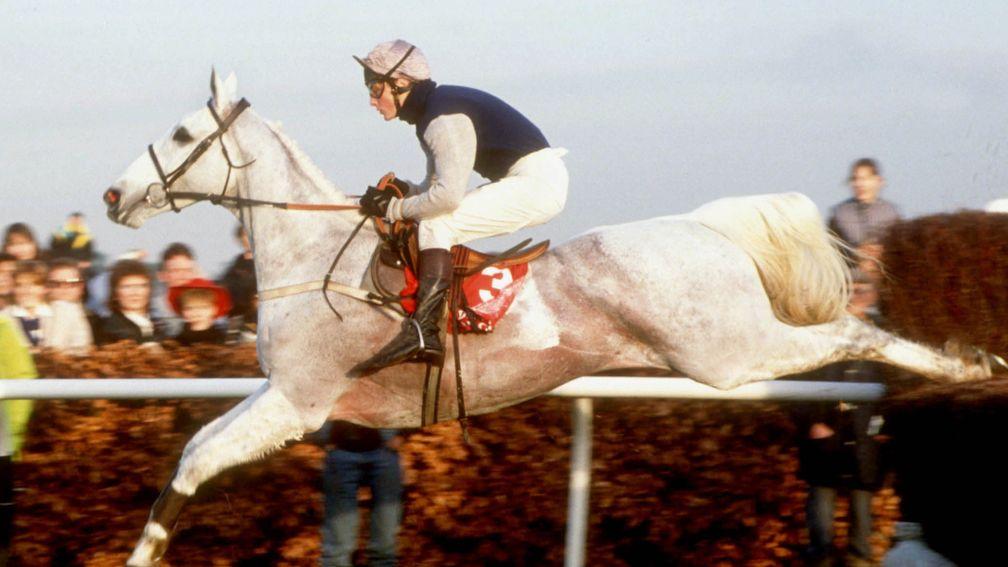A welcome addition on racing history to any racegoer's collection

A Day At The Races: The Horses, People and Races that shaped the Sport of Kings by Peter May
£20 hardback, published by Merlin Unwin Books
Packing more than 500 years of racing history into less than 230 pages is no easy feat. The sport has changed significantly over time, with social and technological advancements mixed with a healthy dose of scandal along the way.
Yet Peter May has undertaken this daunting task in his latest book, which traces the roots of racing in the 16th century and charts the pivotal moments that have shaped the sport along the way.
May serves up a tapestry of the highs and lows of the sport, meticulously broken down by year. The resulting snapshots are insightful and the anecdotes entertaining, and although the book is ideal for reading in snippets, once you delve into its contents you may find it hard to put down.
The inaugural runnings of Classic races, Cheltenham showpieces and international Group 1s are given their moment in the spotlight, nestled between lesser-known tales that are just as vital to racing's lore.
A conspiracy and poisoning in the 1844 Derby is one of the more fascinating excerpts, coupled with accusations of rigged binoculars in the King George V Handicap over a century later. The politics of racecards, a duel to the death at Ascot and the circumstances surrounding ten false starts in the 1867 Derby all add to a comprehensive retelling of a rich racing history.
Tributes are also made to the iconic horses and people who breathed colour into the sport. Racing's leading players are given credit, winding the clock back to the duel between Voltigeur and The Flying Dutchman through to Ormonde, Ribot, Nijinsky, Galileo and Frankel.
Jump racing giants such as Dawn Run and Best Mate are equally given their due, with May making a bold call over who would win in a tantalising match-up between Golden Miller, Flyingbolt, Arkle and Desert Orchid.

Human icons fill out the pages between these entries, with the remarkable betting habits of Dorothy Paget, the adversity faced by jockey Ted Sloan and the rise and return of Lester Piggott all absorbing additions to the timeline.
Although May packages his book as historic snapshots, he also considers the changing nature of racing and eventually shares his own concerns around a "reduction in quality and appeal" within the sport.
It is easy to see why the book takes on this reflective tone, as any perusal around the history of the sport inevitably leads to considerations of the state of affairs today.
Recent discussions on field sizes come to mind when reading of a six-race card on Lincoln Handicap day with 158 runners, while the first recorded race in 1519 likely offering more money to the runner-up than the winner proves prize-money concerns are clearly nothing new.
The recent scandal at Sandown, where two women wearing white trainers weren't permitted in one of the enclosures, is poignant when reading of the aghast reactions to model Jean Shrimpton's above-the-knee dress at the 1965 Australian Derby and the painstaking efforts of Ascot's 1910 clerk of the course to iron his shoelaces ahead of the royal meeting.
Historians may discover omissions from May's selections that arguably deserve their spot in the line-up, yet where this book falls short as a full chronicle of the sport, it makes up for in its well-researched and concise ability to showcase the alluring appeal of racing.
The book's digestible and varied trove of information makes it a deserving addition to any racegoer's collection.

Ultimate Daily – our daily newsletters from Racing Post's experts, exclusive to the inbox of Ultimate Members' Club subscribers. To receive the newsletter subscribe here
inFeatures
- Government says it is working 'at pace' to have white paper measures in force by the summer
- 'The only thing you can do is lie fallow and regroup' - Meades to return with scaled-back operation following blank period
- The Gambling Commission has launched its new corporate strategy - but what are the key points?
- 'It was tragic it happened to Paddy but it was a good thing for the jockeys who followed - good came out of bad'
- Acquisitions, exits and retail resilience - what we learned from Flutter and 888's results
- Government says it is working 'at pace' to have white paper measures in force by the summer
- 'The only thing you can do is lie fallow and regroup' - Meades to return with scaled-back operation following blank period
- The Gambling Commission has launched its new corporate strategy - but what are the key points?
- 'It was tragic it happened to Paddy but it was a good thing for the jockeys who followed - good came out of bad'
- Acquisitions, exits and retail resilience - what we learned from Flutter and 888's results